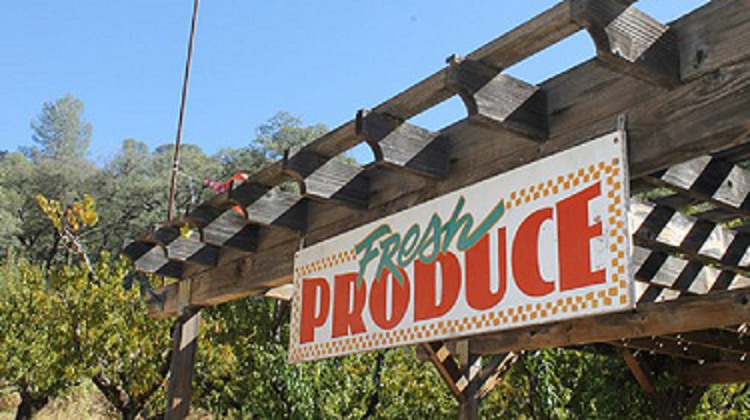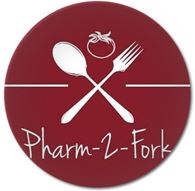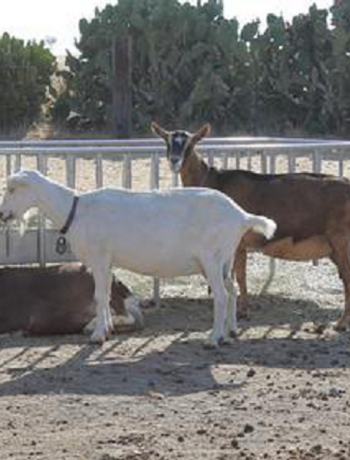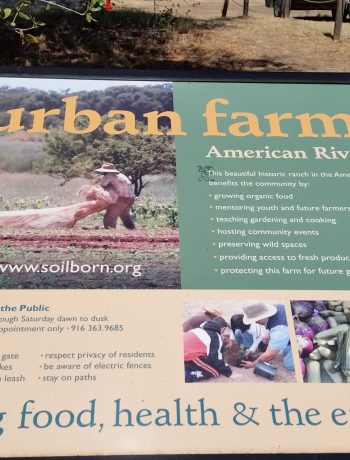
“They tell me when it rains,” Gerardo says, pointing to a small palm sized frog basking in between the wide shady leaves of the cucumber vines. The frogs, he explains, begin croaking and jumping about right before it rains.
Because Gerardo grows everything organically, insects, and critters like frogs, live in harmony on his farm. Gerardo doesn’t need the weather channel. Instead, he monitors the activity of and sounds of nature coming to life, as his indicator of when the weather is going to change. Gerardo spends his entire day on this land.
From sun up to sun down, he cultivates the soil, creating magic along the rolling hills that are covered with acres of vegetables and fruit. He does all of this without the interference of pesticides and herbicides that most industrial farming has come to rely on. As he guides us through the acres of his farmland, we walk paths that are cleared in between each swath. There are rows of vibrant colors everywhere! A burst of red and orange feature the different varieties of tomatoes, while purples hues from the eggplant are abundant. There are a rainbow of colors from the bell peppers and bright yellow sunflowers peeking in the distance.
Our senses are overwhelmed by the smells and colors of the vegetables and fruit, as he hands us a tomato off the vine to sample, and taste! Like nothing you’ve ever had before, Gerardo’s tomatoes burst with flavor. “These black tomatoes” he points out as we each take a juicy bite out of one, “these are great on hamburgers. In fact, if you slice one of these and put it on a burger, you won’t even need the meat.” He then walks us to the bell peppers and snaps off a bright orange pepper for each of us, the taste is unique. In fact, we look at one another in surprise, it tastes almost like fruit it is so sweet.
Next he hands us a few strands of onion chives, “these are delicious in homemade salsa.” We take a bite of the fresh, & spicy chives that give off a nutty flavor. We then walk towards the eggplants that stand out from their purple and white striped skin. They are shaped like a sphere, and look so perfectly uniform, we would have believed him if he told us it was made of blown glass. “Ever seen that before?” he asks us. “They sell these at the Asian markets” he replies, “It’s very healthy”.
These eggplants are used in a lot of Indian and Asian cooking. Life is blossoming everywhere on Gerardo’s farm. He walks us up another small hill, filled with familiar seasonal bright orange pumpkins. “This is Daniel’s responsibility”, he says. Daniel, one of Gerardo’s five children, has inherited a love of farming from his father.
The tidy rows of pumpkin vines alternate with the bowed heads of 15 foot tall sunflowers planted in between them. The pumpkins have healthy looking smooth skin, with thick ridges. Not your ordinary high school Jr. Daniel loves the land as much as his father does. Friendly bees work among the tall sunflowers and tomatillos growing at the edges of the path, near where we are walking. These bees are slender, and quite docile.
They completely ignore us, as there are too many distracting blossoms that keep them busy. “These bees” Gerardo points to another hill, covered with golden prairie grass, “are raised by my neighbor. He’s got healthy bees that don’t get sprayed, because they don’t get sent to the almond farms.” Gerardo is referring to the practice of mobile hives, hives owned by bee keepers that truck them to industrial sized almond farms to pollinate.
Almond growers spraying pesticides on their almond orchards, will end up bathing the visiting bees as well with the spray. Traveling bees endure a difficult life, as they are taken out of their native environment, exposed to herbicides, fungicides, and layers of pesticides that are all used for the increasingly high demand almond.
These bees are increasingly falling to colony collapse disorder, all in the name of pollinating this new cash crop. Gerardo’s neighbor, has opted out of this abusive system, and keeps his bees, healthy, and free of sprays. These bees seem entirely pleased to ‘bee’ working his organic farm. His farming methods nurture them, and in return they nurture the blossoms on his farm. Our last stop was the green house.
Kept warm in the winter with wood Gerardo had built in, “this is where I spend most of my time, preparing the seeds”. For the past 15 years, Gerardo has been using his own seeds, clean from his own plants. On a long table, clusters of bell pepper seeds lay drying out on sheets of paper. He uses a mixture of his organic seeds and seeds from the nearby biodynamic farmers seed supply store for his farm. He hand picks the seeds from the worthiest products from his own garden, which is the key to maintaining his bountiful farm. Towards the end of our tour, Gerardo walks us to the melon patch, dusting off a watermelon he holds it up. It is the perfectly round, with beautiful green stripes that decorate the skin.
He slices it up right there, as it cracks open, he says “I like to grow unique stuff. This is the yellow flesh variety.” Handing us each a slice, we bite in, watermelon juice dripping down our faces, it is literally the freshest we have ever tasted. Gerardo tells us organic farming has always been his passion, and we were tasting it in every bite. The abundance of nature on his farm and the flavorful colors and textures, bring awareness to term farm fresh. Awareness, is exactly why we are visiting Gerardo today.
As the Doctor and the Chef, we hope to bring awareness surrounding the local foods in our community to the Farmers that grow them. We want our community to understand the benefits of locally sourced food, and the slow food movement contributing to our health.Perez’s Red Shack




No Comments